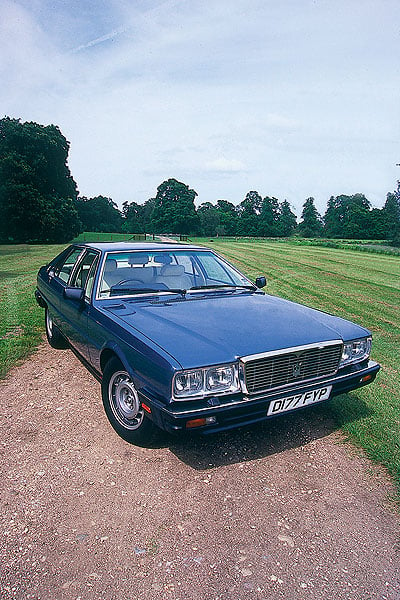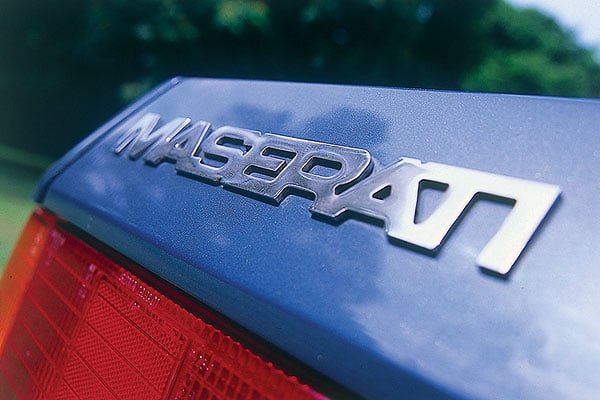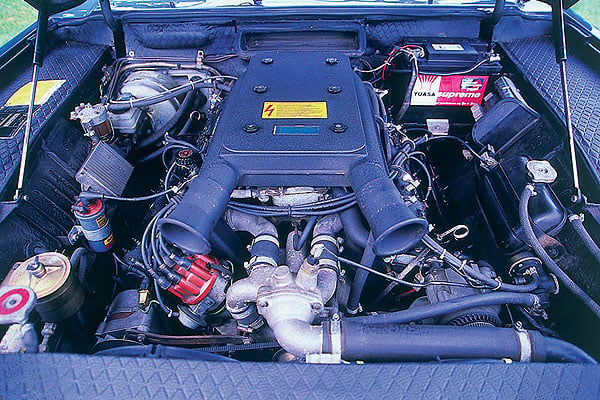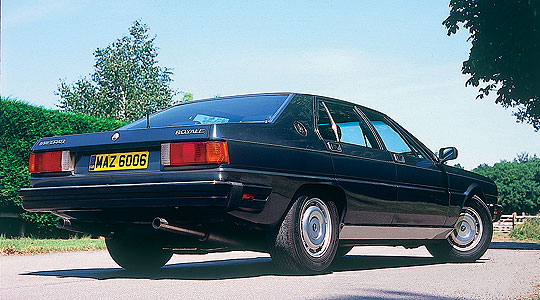 The following is an extract from Simon Park's feature in Auto Italia magazine, Issue 123 2006. For access to the full feature, plus articles on the new Alfa Romeo Spider, the Targa Florio centenary event, 2,000 kms in a Ferrari 612 Scaglietti, a feature on the Lancia Flavia and much more, see www.auto-italia.co.uk
The following is an extract from Simon Park's feature in Auto Italia magazine, Issue 123 2006. For access to the full feature, plus articles on the new Alfa Romeo Spider, the Targa Florio centenary event, 2,000 kms in a Ferrari 612 Scaglietti, a feature on the Lancia Flavia and much more, see www.auto-italia.co.uk
When Maserati was dumped unceremoniously into liquidation by its French masters, in the spring of 1975, the future did not look rosy. But by the end of the year, after a long hot summer of uncertainty, disruption and demonstrations, things took a turn for the better at Viale Ciro Menotti, thanks to the entrepreneurial skills of one Alessandro De Tomaso.
The wily Argentinean took control of Maserati and all its assets, at minimal cost to himself, and unencumbered by any liability for its debts. He arrived with plans for new engines, new models, and a firm belief in the importance of a proper Quattroporte to challenge the Germans and Jaguar, with a nice big V8 and none of that dreadful Citroen gubbins. De Tomaso brought with him, too, Aurelio Bertocchi, to replace Giulio Alfieri as engineering director; and it was he who guided the new super-saloon to its launch at the 1976 Turin Show.
Giorgetto Giugiaro’s two Maserati-based four-door show cars (the Medici 1, from Turin 1974, and the Medici 2, Paris 1976) may well have helped to land him the contract for the new QP, but De Tomaso had in mind something far more old-school, less radical and avant-garde. Giugiaro duly came up with a big, beefy berlina which was as attention-grabbing as its Bertone-designed predecessor had been modestly self-effacing.
Gone were the QPII’s hydraulic systems, in their place conventional power steering, brakes, and independent suspension which bore a striking resemblance to that of the contemporary Jaguar XJ. The 1.9-tonne behemoth certainly needed the faithful old all-alloy four-cam V8, with which it was initially offered in both 4136cc/255bhp and 4930cc/280bhp forms. Power went to the back wheels (of course) via either a 5-speed ZF manual or 3-speed Chrysler Torqueflite automatic gearbox. Stuff petrol prices – the big banger was back.


Well, almost. A full three years of development followed its Turin launch. But when finally it went on sale in late 1979 the QPIII was an instant success, 120 examples being sold in Italy alone in 1980. De Tomaso’s instincts had been entirely vindicated.
Giugiaro’s angular, 30-year old lines have aged reasonably well, though, even without the benefit of the Royale’s softer edges. The high front end was a deliberate styling feature, to give it that ‘out of my way, peasant’ hauteur, but it’s probably the design’s most dated aspect. There are hints of various far humbler contemporary machines here and there, but the QP’s sheer size and presence dominate – for once, the cumbersome impact-absorbing bumpers demanded by US regulations look proportionate. Without question, this is the most imperious of the Quattroportes.
The autostradas, -routes and -bahns of Europe were the QPIII’s natural habitat, but I had to make do with some interesting Northamptonshire byways, some of which demand concentration in a car of these proportions. The phrase “shrinks around you” would be inappropriate here even if it weren’t such a cliché, but it was less intimidating than expected – the high prow is easily visible beyond several hectares of bonnet, allowing accurate helmsmanship.
There’s more than a whiff of Americana about the car once you’re underway, from the big V8’s growl to the Chrysler ’box’s super-smooth shifts (which put the latest car’s automatic mode to shame, incidentally). Given too much throttle from rest the engine had a tendency to stall, but thereafter progress was deceptively rapid. Left to its own devices the Torqueflite transmission changes up at around 4000rpm, where torque is still plentiful, but hang on to the two lowest speeds and the V8 will blare its way past 6k (and any even vaguely legal speed) with exhilarating ease.

And it stops, too. Aurelio Bertocchi was dismissive of ABS, then in its infancy, branding it “not absolutely necessary… not worth the trouble”. We’ve all moved on a bit since then, but I never had cause to miss it. The pedal (which leaves precious little room for the driver’s left foot next door) has a longish travel, soft at first, but firming up to provide ultimately powerful anchorage.
What the QPIII does best, however, is waft. In fact, it will out-waft just about anything you care to name. A return to the ethos of the original Quattroporte, after the aberrant eccentricities of the QPII, De Tomaso’s contribution to the four-door dynasty is a surprisingly enjoyable device. Not the quintessential driver’s car, no, but neither is it the flaccid old barge you might imagine.
|
Words by Simon Park and pictures courtesy of Michael Ward.
See www.auto-italia.co.uk or call +44(0)1858 438817 for back issues and subscriptions. |
ClassicInside - The Classic Driver Newsletter
Free Subscription!





